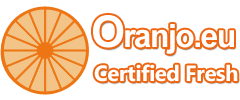0
AI vs. Human: Who Designs Better Logos? www.design-lab.co.inban site
In today’s rapidly evolving digital landscape, design has become more accessible than ever. With the advent of artificial intelligence (AI), tools and platforms can now generate logos within minutes—an innovation that prompts an important question: Can AI truly rival human creativity in logo design?
This article explores the strengths and limitations of both AI and human designers to assess who ultimately creates better logos.
The Rise of AI in Logo Design
AI-powered design platforms have grown in popularity due to their efficiency, affordability, and ease of use. These systems use machine learning algorithms and pre-existing design data to generate logos based on user input, such as company name, industry, and preferred color palette.
Advantages of AI in logo design include:
Speed and Scalability: AI can produce multiple design options in seconds, making it ideal for startups and small businesses with limited time or budget.
Consistency: AI ensures consistent branding across platforms by following preset rules and templates.
Affordability: Compared to hiring a professional designer, AI tools often offer logo packages at a fraction of the cost.
However, these benefits often come at the expense of originality and emotional depth.
The Human Touch in Logo Design
Professional designers bring a unique blend of creativity, cultural understanding, and emotional intelligence that AI cannot replicate—at least not yet. Humans have the ability to interpret abstract ideas, connect with the brand’s story, and craft logos that evoke feelings and foster long-term recognition.
Key strengths of human designers include:
Creative Insight: Designers draw from personal experience, artistic intuition, and cultural context to create original work.
Emotional Connection: A logo designed by a human often tells a story, aligns with brand values, and resonates with the target audience.
Adaptability: Humans can think outside the box and adapt to ambiguous or evolving client needs in ways AI cannot.
Additionally, designers can collaborate with clients, interpret feedback, and refine designs through conversation and mutual understanding.
Comparative Limitations
While both approaches have their advantages, each comes with its own limitations:
AI Limitations:
Designs can feel generic or templated.
Lack of emotional or cultural nuance.
Limited adaptability to abstract or unconventional ideas.
Human Limitations:
More time-consuming.
Higher costs.
Results may vary depending on the designer’s skill and experience.
Finding the Right Balance
Rather than framing the debate as “AI vs. Human,” the future of logo design may lie in a hybrid approach. AI can handle repetitive tasks, generate initial ideas, and speed up workflows, while human designers provide the depth, strategy, and creative direction needed for a truly impactful brand identity.
Design agencies are increasingly incorporating AI tools into their process—not as replacements for human creativity, but as enhancements to it.
Conclusion: Who Designs Better Logos?
The answer depends on the context and the goals of the project. For businesses seeking a quick, affordable, and basic logo, AI tools offer a viable solution. However, for organizations that value brand storytelling, emotional resonance, and long-term recognition, human designers remain indispensable.
Ultimately, the best logos are those that effectively communicate a brand’s essence—and for now, the human mind still holds the edge in doing so.
Comments (0)
You need to be logged in to write comments!
This story has no comments.

